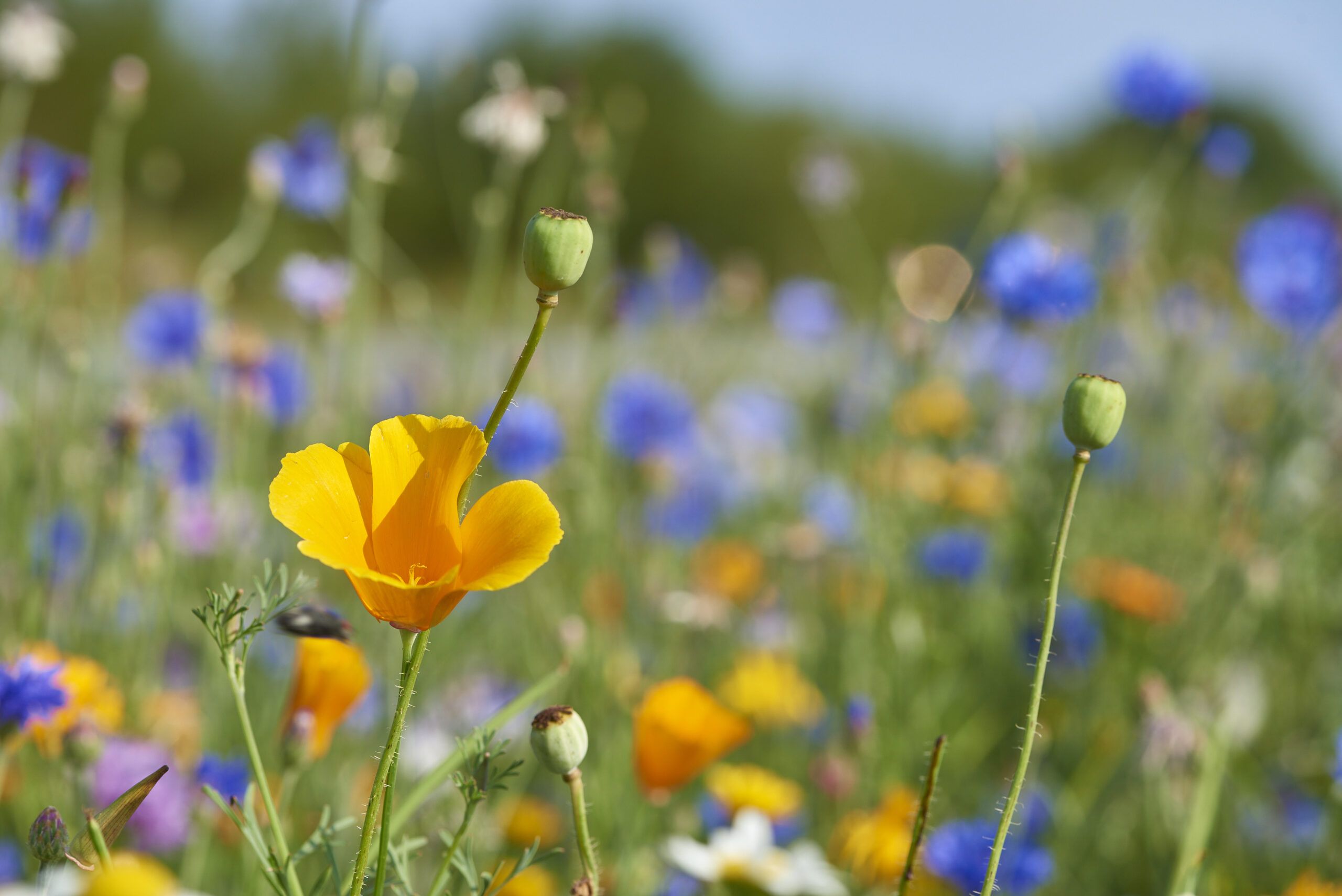The benefits of lucerne as a perennial living mulch
In regenerative farming, we are constantly on the lookout for new methods that help us take care of and improve our soil. Frederik V. Larsen, no-till agronomy consultant with Agroganic is one of those regenerative farmers who is experimenting with new, innovative solutions, and his current project is all about finding the optimal crop to use as living mulch. His research and field experiments so far have found that lucerne might be the ideal candidate.
But what exactly is living mulch? And why is it such a valuable tool in regenerative agriculture?
Leaving the soil bare after harvest, plowing or tillage can lead to adverse effects such as erosion from wind and precipitation and loss of valuable nutrients, as well as providing conditions for weeds to germinate and grow without competition. This is part of the reason regenerative agriculture aims to have the soil covered throughout the year. Introducing a living mulch to your fields is one way to do that. A living mulch is a cover crop that is sown either before or with the cash crop and kept as a living ground cover throughout the growing season and throughout the following crops in the rotation. Growing a living mulch can help with weed suppression, soil temperature regulation, evaporation, soil structure, erosion from rain and wind, as well as nutrient retention and addition.
Many annual species have been used as cover crops, but Frederik sees the potential in perennial living mulches (a perennial cover crop), which is why he started experimenting with lucerne as a living mulch in his cereal crops. Lucerne has an array of beneficial properties that makes it a great choice as a living mulch, especially in cereals; It’s perennial, it fixes nitrogen from the air, it has a taproot, it’s herbicide tolerant, and it might help prevent the spread of fungal diseases such as septoria.
No need to resow every year
Usually, cover crops are resown every year, and often during a time where there is much else that needs doing in the field. Every time you need to establish a crop it comes with risks. With a perennial cover crop, you avoid the stress of needing to make sure the cover crop gets sown and established every single year. With no-till techniques, you can keep the lucerne as a living mulch in the ground for years while establishing a new annual cash crop into it every year.
Decreasing the need for mineral nitrogen fertilizer
Like many popular cover crop species, lucerne is a legume, which means it has nitrogen fixing abilities, and not only that, but lucerne is especially efficient at it, providing high quality biomass to the benefit of the soil fertility. Both from an environmental and economical perspective, reducing the need for mineral fertilizers is desirable, and since lucerne is capable of fixing up to 400 kgN/ha yearly or 100 kgN/ha as an off-season living mulch, it provides valuable nitrogen to the cash crop.
Less root competition
Another desirable quality of lucerne is that unlike many other legume living mulch species, it has a deep taproot. Cereal crops have shallow fibrous roots and growing a cover crop that also has fibrous roots increases the competition between these crops, which causes decreased cereal yields. The taproot allows the lucerne to grow deeper, utilizing a different part of the soil profile than the cereal, resulting in less competition between the crops.
Doesn’t compromise chemical weed management
Lucerne’s powerful taproot makes it tolerate high doses of herbicide compared to other cover crop species with shallow fibrous roots, which makes it possible to still chemically treat grass weeds without killing the lucerne.
Prevents spread of fungal diseases
Potentially, a living mulch like lucerne also has the capacity to reduce the infection rate of fungal diseases like septoria. Research is still being done to quantify this case in the field, but the theory is as follows; Septoria infects crops by being splashed up from the ground by precipitation. However, since septoria only affects its host species, the septoria spores will become inactive when landing on the leaves of a non-host. Since living mulch provides a year-round soil cover, fewer spores are being sent into circulation by rain-soil contact. Lucerne is a non-host, so the spores will become inactive when landing on the leaves, and since the perennial lucerne is already well established before the wheat emerges, lucerne has the potential to reduce the infection rate significantly.
In conclusion, lucerne has a lot of potential as a living mulch crop, and if you want to follow Frederik and his lucerne living mulch experiments, you can find him on X as @fredVLarsen and updates from his experiments under the hashtag #livingmulch.
If you are interested in getting started with living mulch, contact us at Agroganic today to learn more about how we can help you.

